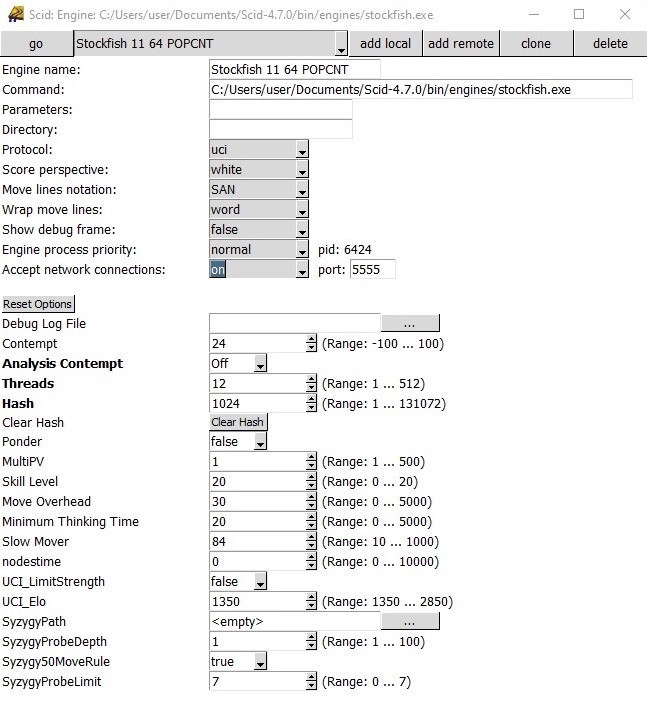I would appreciate if you can let me know if I forgot something or if you have suggestions.
This is what I have done:

- Engine name: it is set with the name sent by the engine (uci's "id name" or xboard's "myname"). It can be changed freely.
- The usual command parameters: filename of the executable, command line args and working directory.
- The communication protocol with the engine (uci or xboard).
- Options for formatting the engine output: score perspective (white or engine), moves notation (SAN, English SAN, utf8 figurine, raw unmodified engine pv lines) and line breaks (single line, a line break may occur after any character or a line break will only be made at word boundaries).
- Debug frame: hide or show a frame with all the unmodified input/output between SCID and the engine. Useful for engine authors.
- Engine process priority: allows to give a lower priority to the engine. It is useful if you want to use all the available threads for the analysis and at the same time maintain a reactive system.
- Accept network connection: allows remote instances of SCID to connect to and use this engine. It is useful if you want to use multiple computers.
- Then there are the options sent by the engine. For each option the name, the current value and possibly the range of valid values are displayed. The name of the options that have a value different from the default is displayed in bold. Clearing the value of an option restores the default value.

